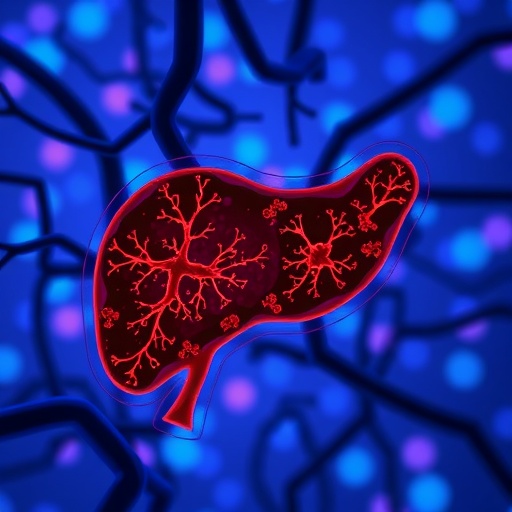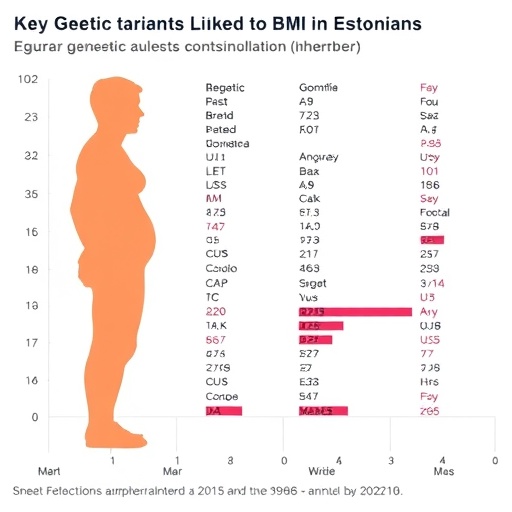In a groundbreaking development in cancer research, scientists have uncovered a novel mechanism by which the antiviral drug Nelfinavir induces ferroptosis—an iron-dependent form of regulated cell death—in hepatocellular carcinoma (HCC) cells. This discovery not only broadens our understanding of ferroptosis regulation but also opens promising therapeutic avenues for liver cancer, a malignancy notoriously resistant to conventional treatments. The study illuminates how Nelfinavir orchestrates a multifaceted cellular assault by triggering endoplasmic reticulum (ER) stress, which subsequently disrupts cellular antioxidative defenses and impairs mitochondrial function.
Ferroptosis is characterized by the accumulation of lipid peroxides to lethal levels, distinct from apoptosis or necrosis. The dual modulation of cellular stress pathways by Nelfinavir appears to be central to tipping the balance toward ferroptotic death. Crucially, this investigation demonstrates that Nelfinavir downregulates the GPX4/GSH system, a canonical antioxidant pathway that protects cells from lipid peroxidation. GPX4 (glutathione peroxidase 4) acts as a gatekeeper against ferroptosis by detoxifying lipid hydroperoxides using the reducing power of glutathione (GSH). The pharmacological suppression of this enzyme complex sensitizes malignant cells to oxidative damage.
Simultaneously, researchers observed an upregulation of the NRF2/HO-1 axis in response to Nelfinavir-induced ER stress. NRF2 (nuclear factor erythroid 2-related factor 2) is a master regulator of cellular antioxidant responses, typically activated to counterbalance oxidative insults. Its target gene, HO-1 (heme oxygenase-1), catalyzes heme degradation with cytoprotective outcomes. However, paradoxically, the NRF2/HO-1 pathway’s induction here fails to confer sufficient protection against the oxidative stress, suggesting a complex interplay where protective signaling is overridden, steering cells toward ferroptosis.
Mitochondrial impairment emerged as a critical downstream event following ER stress induction by Nelfinavir. The mitochondria, as cellular powerhouses, are also central regulators of redox homeostasis and metabolic control. The study identified marked disruptions in mitochondrial membrane potential and respiration efficiency, further exacerbating reactive oxygen species (ROS) accumulation. This mitochondrial distress contributes decisively to cellular demise by fostering an environment conducive to lipid peroxidation and ferroptosis execution.
This research carries momentous implications because hepatocellular carcinoma remains a global health challenge, with limited effective therapies for advanced stages. Targeting ferroptosis represents a cutting-edge strategy, exploiting cancer cells’ vulnerabilities to oxidative stress. By repositioning Nelfinavir, an FDA-approved protease inhibitor traditionally used in HIV treatment, as a ferroptosis inducer in liver cancer cells, this study offers a promising translational framework that could expedite clinical applications.
The elegant experimental approach involved detailed molecular analyses and multiple cellular assays to validate the impact of Nelfinavir on ER stress markers, antioxidant system components, and mitochondrial function. Protein expression assays illustrated significant downregulation of GPX4 and depletion of intracellular glutathione pools post-treatment. Concurrently, quantitative PCR and Western blot analyses revealed enhanced NRF2 and HO-1 expression, signaling activation of adaptive oxidative stress responses.
Furthermore, live-cell imaging and biochemical assays documented mitochondrial depolarization and impaired oxidative phosphorylation capacity following drug exposure. Together, these insights underscore a coordinated disruption of cellular homeostatic networks, ultimately compromising survival and triggering ferroptotic pathways. This multidimensional disruption induced by Nelfinavir establishes a potent cytotoxic environment specifically detrimental to HCC cells.
The study also contextualizes the findings within the broader landscape of ferroptosis research, highlighting the growing recognition of ER stress as a pivotal initiator of ferroptotic signaling. ER stress sensors such as PERK and ATF4 respond to proteostatic imbalance by activating gene programs that intersect with antioxidant regulation and metabolic adaptations. Nelfinavir’s capacity to amplify this stress response effectively undermines cancer cells’ ability to marshal defensive responses.
Moreover, the precise mechanistic elucidation of how Nelfinavir modulates the GPX4/GSH system and NRF2/HO-1 axis enriches our understanding of ferroptosis’ regulatory complexity. It suggests that therapeutic strategies harnessing ER stress induction must consider the nuanced balance between pro-death and pro-survival pathways regulated by NRF2 and its downstream effectors. The data imply a threshold beyond which protective responses are insufficient, leading to ferroptosis execution.
Importantly, the investigation raises the tantalizing possibility that combining Nelfinavir with other agents targeting antioxidant defenses or mitochondrial function could potentiate ferroptosis induction, amplifying anti-tumor efficacy. Such combination therapies might overcome resistance mechanisms and achieve more durable responses in hepatocellular carcinoma. Future preclinical and clinical studies will be needed to explore these synergistic strategies.
The findings also underscore the value of drug repurposing in oncology, leveraging known safety profiles and pharmacodynamics of existing medications to accelerate innovative cancer therapies. Nelfinavir’s established clinical use provides a practical vantage point for rapid translation of ferroptosis-based interventions, potentially reducing development timelines and costs associated with novel drug discovery.
Beyond hepatocellular carcinoma, the mechanistic insights unveiled here may inform ferroptosis-targeted approaches across diverse malignancies exhibiting similar vulnerabilities in ER stress responses, redox regulation, and mitochondrial integrity. Such cross-cancer applicability further amplifies the significance of this research.
In sum, the study presents a comprehensive narrative detailing how Nelfinavir initiates ER stress, suppresses critical antioxidant systems, activates NRF2-mediated pathways, and disrupts mitochondrial function culminating in ferroptosis. This cascade offers an innovative therapeutic window for tackling hepatocellular carcinoma, addressing a critical unmet need. By illuminating these cellular mechanisms, the research breathes fresh life into ferroptosis exploration and exemplifies how integrative molecular pharmacology can revolutionize cancer treatment paradigms.
As the scientific community continues to unravel ferroptosis complexities, the potential to selectively eliminate resistant cancer cells through induced oxidative catastrophe is becoming an increasingly tantalizing reality. This investigation not only mirrors the evolving understanding of cell death modalities but also exemplifies the creative application of existing drugs toward novel anticancer strategies. The clinical horizon for hepatocellular carcinoma may soon be reshaped by such paradigm-shifting discoveries rooted in molecular precision and translational promise.
Subject of Research:
Hepatocellular carcinoma cell response to Nelfinavir-induced ferroptosis through ER stress mechanisms.
Article Title:
Nelfinavir triggers ferroptosis by inducing ER stress mediated downregulation of GPX4/GSH system, upregulation of NRF2/HO-1 axis, and mitochondrial impairment in hepatocellular carcinoma cells.
Article References:
Zhang, L., Wang, X. Nelfinavir triggers ferroptosis by inducing ER stress mediated downregulation of GPX4/GSH system, upregulation of NRF2/HO-1 axis, and mitochondrial impairment in hepatocellular carcinoma cells. Cell Death Discov. 11, 444 (2025). https://doi.org/10.1038/s41420-025-02761-w
Image Credits: AI Generated
DOI: https://doi.org/10.1038/s41420-025-02761-w
Tags: endoplasmic reticulum stress responseER stress and cancer therapyferroptosis in hepatocellular carcinomaglutathione peroxidase 4 regulationiron-dependent cell death mechanismslipid peroxidation and cell deathnelfinavir and liver cancernovel cancer treatment mechanismsNRF2/HO-1 signaling pathwayoxidative stress in cancer treatmentpharmaceutical interventions in cancertargeted therapy for liver malignancies





